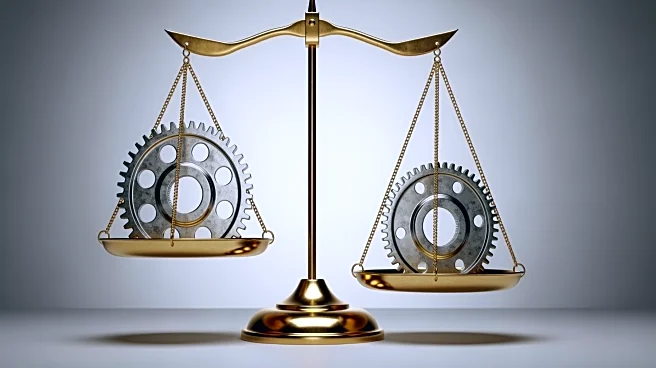What's Happening?
President Trump has proposed distributing $2,000 rebate checks to Americans, funded by revenue from tariffs imposed on imports. This initiative is projected to cost $600 billion annually, which is double
the expected revenue from the new tariffs. The Committee for a Responsible Federal Budget has analyzed the proposal, highlighting that the tariffs are projected to generate only $300 billion a year. As of October, the new tariffs have added $100 billion in tax revenue. Trump's proposal comes amid legal challenges, as the Supreme Court may rule against his use of emergency powers to justify these tariffs. The proposal would require Congressional approval, and a similar bill introduced by Sen. Josh Hawley did not advance.
Why It's Important?
The proposal to use tariff revenue for rebate checks could significantly impact the U.S. economy and fiscal policy. If implemented, it would increase the federal deficit by $6 trillion over a decade, according to the Committee for a Responsible Federal Budget. This initiative aims to provide financial relief to middle and lower-income Americans, potentially boosting consumer spending. However, the legal challenges and the need for Congressional approval pose significant hurdles. The proposal also highlights the broader debate on the use of tariffs as a tool for economic policy and their implications for international trade relations.
What's Next?
The Supreme Court's decision on the legality of Trump's tariffs will be crucial. If the court rules against the tariffs, the administration may need to refund companies that paid them, complicating the rebate plan. Additionally, Congressional approval is necessary for the rebate checks, and previous attempts to pass similar legislation have failed. The outcome of these legal and legislative processes will determine the feasibility of Trump's proposal and its impact on the U.S. economy.
Beyond the Headlines
The proposal raises questions about the ethical use of tariff revenue and the balance between fiscal responsibility and economic stimulus. It also reflects ongoing tensions in U.S. trade policy, particularly with countries affected by the tariffs. The initiative could set a precedent for using trade policy as a domestic economic tool, influencing future administrations' approaches to tariffs and international trade.












